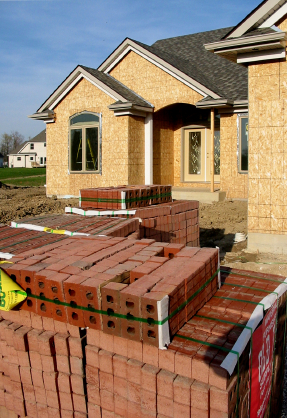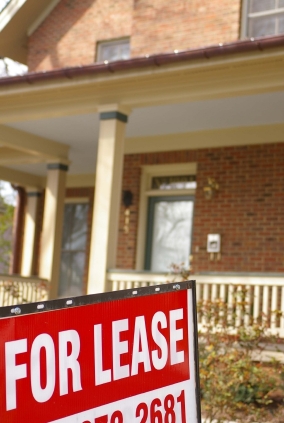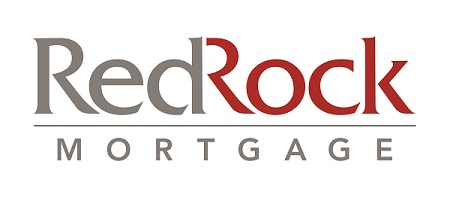These are some of the most commonly asked questions. Check back often as new questions are added frequently.
Q: I am self-employed. How do I provide proof of income?
In most cases, two years tax returns are required.
Q: Can I use cash on hand to finance a home?
Cash on hand that has an undetermined source cannot be used as a down payment to purchase a home.
Q: I have bad credit. What are my options?
RedRock Mortgage offers a number of different loan programs for borrowers with different levels of credit. Talk with a Mortgage Banker today.
Q: I have very little or no money for down payment. What are my options?
The VA loan program offers loans with no down payment.
The USDA Rural Development program offers loans with no down payment.
The Section 184 Native American loan requires 2.25% down payment
The FHA program requires 3.5% down payments
Conventional loans require 5% down payment while Conventional HomeReady require 3% down payment.
Family members can provide gift funds.
Your 401k account is a great source for funds for down payment. Most 401k plans offer a withdrawal without penalty for the purchase of your home.
Q: How much house can I afford?
This is typically the number one question mortgage professionals are asked by new clients.Your buying power is defined by what we call "debt-to-income" ratios. There are different requirements for the different loan programs.
Of critical importance when considering mortgage financing: There is sometimes a difference between what a client ***can*** borrow and what they ***should*** borrow. In other words, what makes for a comfortable long-term mortgage payment?
The Quick Answer:

If we’re simply considering the financial math, lenders will calculate your Debt-to-Income Ratio and generally allow for 29-34% of your gross income to be used for the new house payment with up to 43-50% of your gross income to be used for all consumer related debts combined.
Sample Mortgage Scenario:
Let’s use a gross monthly income of $3000 and a qualifying factor of 30% Debt-to-Income Ratio:
$3000 multiplied by .3 (30%) = $900 max monthly mortgage payment
This means that your mortgage payment (Principal, Interest, Taxes, Hazard Insurance) cannot exceed $900 a month.
“Ballparking” a Qualifying Loan Amount:
Simple step: We use a safe average of $7 per month in payment for every $1000 in purchase price so…
Step 1) $900 a month divided by $7 = $128.50
Step 2) $128.50 multiplied by 1000 = $128,500 loan amount.
Remember, these are average ratios and guidelines set by most lenders for common mortgage programs.
Keep in mind, while most consumer debts are listed on a credit report, there are some additional monthly liabilities that may contribute to the overall qualifying percentages as well. Regardless of how your personal income and credit scenarios factor in, it is important to consider your overall budget when trying to determine how much of a mortgage you should qualify for.
Other items to consider in your monthly budget:
1. Confirm all debts are taken into account
2. Any private notes or family loans
3. Short-term expenses – medical, auto repairs, travel, emergencies
4. Plan on additional expenses for the home such as water, electric, maintenance, etc…
5. Keep a cushion for savings and financial planning
The best bet is to talk with a RedRock Mortgage Banker to determine how much house you can comfortably afford. And remember, you still want to have enough money for other things!
Q: Can I include repairs in my loan?
Yes. The USDA loans allow costs of repairs to be financed into the home. In addition, RedRock Mortgage offers both rehab loans and buyer-held escrow accounts to complete repairs on a home.
Q: Do I need to sell my home before I can qualify for a new mortgage on another property?
 Although every situation is unique, it is not uncommon for homebuyers to qualify for a mortgage on a new home while still living in their primary residence.
Although every situation is unique, it is not uncommon for homebuyers to qualify for a mortgage on a new home while still living in their primary residence.
Perhaps you are outgrowing your current house, or have been forced to relocate due to a job transfer? Regardless of the motivation for keeping one property while purchasing another, let’s address this question with the mortgage approval in mind:
So, Do I Have To Sell?
Yes. No. Maybe. It depends.
Welcome to the wonderful world of mortgage lending. Only in this industry can one simple question elicit four answers…and all of them may be right.
If you are in a financial position where you qualify to afford both your current residence and the proposed payment on your new house, then the simple answer is No!
Qualifying based on your Debt-to-Income Ratio is one thing, but remember to budget for the additional expenses of maintaining multiple properties. Everything from mortgage payments, increased property taxes and hazard insurance to unexpected repairs should be factored into your final decision.
What If I Rent My Current Property?
This scenario presents the “maybe” and the “it depends” answers to the question.
If you’re not quite qualified to carry both mortgages, you may have to rent the other property in order to offset the mortgage payment.
In that scenario, the lender will typically only count 75% of the monthly rent you are proposing to receive.
So if you are going to receive $1000 a month in rent and your current payment is $1500, the lender is going to factor in an additional $750 of monthly liabilities in your overall Debt-to-Income Ratios.
Another detail that can present a huge hurdle is the reserve requirement and equity ratio most lenders have. In some cases, if you are going to rent out your current home, you will need to have at least 25% equity in order to offset your payment with the proposed rent you will receive.
Without that hefty amount of equity, you will have to qualify to afford BOTH mortgage payments. You will also need some significant cash in the bank.
Generally, lenders will require six months reserve on the old property, as well as six month reserves on the new property.
For example, if you have a $1500 payment on your old house and are buying a home with a $2000 monthly payment, you will need over $21,000 in the bank.
Keep in mind, this reserve requirement is incremental to your down payment on the new property.
What If I Can’t Qualify Based On Both Mortgage Payments?
This answer is pretty straightforward, and doesn’t require a financial calculator to figure out.
If you are in this situation, then you will have to sell your current home before buying a new one.
If you aren’t sure of the value of the home or how your local market is performing, give us a ring and we’ll happily refer you to a great real estate agent that is in tune with property values in your neighborhood.
As you can tell, purchasing one home while living in another can be a very complicated transaction. Please contact us at anytime so we can review your specific situation and suggest the proper action plan.
Q: What causes mortgage rates to change?
Mortgage Bonds are largely affected by various market forces that influence the changing demand for bonds within the market. Some of the key economic factors that have the greatest impact are unemployment percentages, inflationary fears, economic strength and the overall movement of money in and out of the markets. Like stocks, most fluctuation is caused by consumer and investor emotions.

Be sure to also check out our Mortgage Calculators page for handy tools.
 Although every situation is unique, it is not uncommon for homebuyers to qualify for a mortgage on a new home while still living in their primary residence.
Although every situation is unique, it is not uncommon for homebuyers to qualify for a mortgage on a new home while still living in their primary residence.


